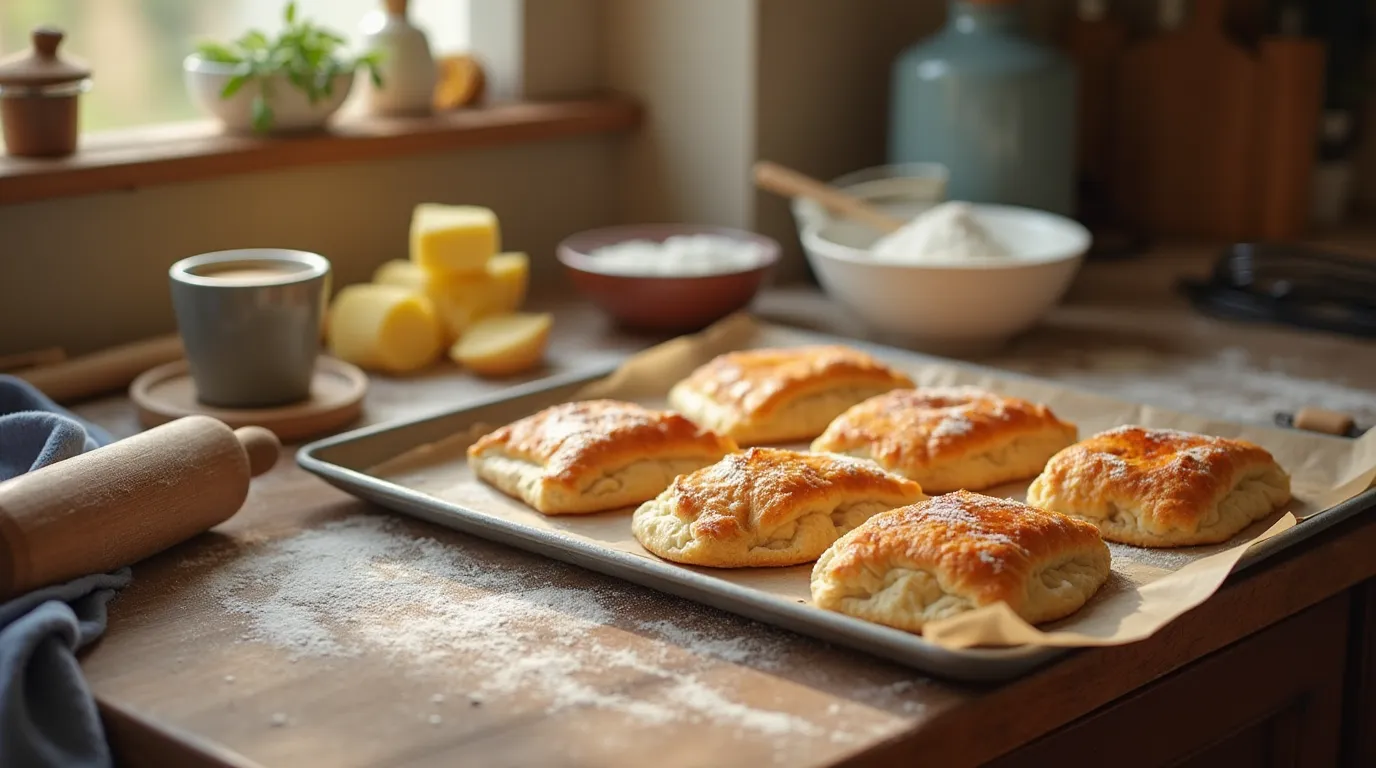
Table of Contents
There’s something magical about the scent of freshly baked pastries wafting through your kitchen in the morning. The buttery, flaky texture of Gipfeli—a traditional Swiss croissant—takes you straight to a cozy café in Switzerland, even if you’re far from the Alps. Whether you’re a seasoned baker or a first-time pastry maker, learning how to craft the perfect Gipfeli from scratch is an experience that’s well worth your time.
In this guide, I’ll walk you through everything you need to know about making traditional Swiss Gipfeli—right from the basics of the dough to the final golden-brown croissants. By the end of this article, you’ll be able to create melt-in-your-mouth pastries that will impress anyone who tastes them.
What is Gipfeli? Understanding the Traditional Swiss Croissant
Before we dive into the nitty-gritty of baking Gipfeli, it’s essential to understand what makes this Swiss pastry so special. If you’re familiar with croissants, you’ll find that Gipfeli is quite similar in texture and appearance. However, there are some subtle differences that set the Swiss version apart.
Gipfeli is the Swiss word for a crescent-shaped pastry, and in many Swiss households, it’s a breakfast staple. While traditional croissants come from France, the Swiss version is often a bit sweeter, softer, and more delicate. These pastries are typically enjoyed fresh out of the oven, with a dollop of jam or a cup of coffee to complete the experience.
In Switzerland, Gipfeli is more than just a pastry; it’s part of the culture. From local bakeries to home kitchens, the process of making Gipfeli is often passed down through generations. Whether you’re looking to recreate a piece of Swiss tradition in your kitchen or simply enjoy a delicious pastry, making Gipfeli from scratch is an incredibly rewarding process.
Ingredients for a Perfect Gipfeli Recipe

To make perfect Gipfeli, you need the right ingredients. While the recipe for Gipfeli might seem simple, it’s the quality of your ingredients that will truly elevate the final product. Here’s a breakdown of everything you’ll need:
| Ingredient | Quantity |
|---|---|
| All-purpose flour | 500g |
| Salt | 10g |
| Sugar | 50g |
| Instant yeast | 10g |
| Milk | 250ml |
| Butter (unsalted) | 200g |
| Egg | 1 (for egg wash) |
| Water | 100ml |
Key Notes:
- All-purpose flour: This is the base of your dough. Using high-quality flour will give your Gipfeli a light, fluffy texture.
- Butter: You’ll need a generous amount of unsalted butter to create the layers that make Gipfeli so special. The butter should be cold and kept in the fridge until you’re ready to use it.
- Instant yeast: Instant yeast works best for a quick rise and reliable results. It’s much more efficient than traditional active dry yeast, and you don’t need to activate it before using.
- Milk: The milk adds richness to the dough, giving the Gipfeli a soft, tender texture.
- Egg: The egg wash is crucial for getting that golden, glossy finish on your baked pastries.
Step-by-Step Instructions: How to Make Traditional Swiss Gipfeli
Now that you have your ingredients ready, let’s jump into the process. Making Gipfeli requires some patience, but the results are absolutely worth it. Follow these steps carefully for the best results:
Preparing the Dough
- Activate the yeast: In a small bowl, combine warm water (about 100ml) and sugar. Sprinkle the yeast over the water and let it sit for 5-10 minutes until it becomes frothy.
- Mix the dry ingredients: In a large mixing bowl, combine the flour and salt. Stir well to ensure that the salt is evenly distributed throughout the flour.
- Combine wet and dry ingredients: Slowly add the yeast mixture and the milk to the flour. Mix everything together with your hands or a dough hook until a soft dough forms.
- Knead the dough: Transfer the dough to a floured surface and knead for about 10 minutes until it’s smooth and elastic. If you’re using a stand mixer, knead on low speed for 5-7 minutes.
- Let the dough rise: Place the dough in a lightly oiled bowl and cover it with a damp towel. Let it rise in a warm place for about 1 hour, or until it doubles in size.
Rolling and Folding: Creating Layers
The key to flaky Gipfeli lies in the rolling and folding process, which creates the buttery layers inside the pastry.
- Prepare the butter: While the dough is rising, place the butter between two sheets of parchment paper and use a rolling pin to flatten it into a square about 1/2-inch thick. Refrigerate the butter to keep it cold.
- Roll out the dough: Once the dough has doubled in size, turn it out onto a floured surface. Roll it into a large rectangle about 1/8-inch thick.
- Incorporate the butter: Place the cold butter in the center of the dough. Fold the dough over the butter so that the butter is completely enclosed. Pinch the edges to seal the dough.
- First fold: Roll the dough out into a long rectangle and then fold it into thirds, like a letter. This is your first fold. Refrigerate the dough for 30 minutes to keep the butter firm.
- Repeat the fold: Roll the dough out again and fold it into thirds. Refrigerate the dough again for another 30 minutes. Repeat this folding process two more times for a total of four folds.
Shaping the Gipfeli
After the dough has gone through the folding process, it’s time to shape the Gipfeli.
- Roll out the dough: Roll the dough into a large rectangle about 1/8-inch thick.
- Cut the dough: Using a sharp knife or pizza cutter, slice the dough into triangles. You should be able to cut about 8-10 triangles from the dough.
- **Shape the Gipfeli: Starting from the wide end of each triangle, gently roll the dough towards the point to form a crescent shape. Be sure not to roll them too tightly, as you want to allow the layers to expand while baking.
- Place on a baking sheet: Arrange the shaped Gipfeli on a baking sheet lined with parchment paper. Leave some space between each one to allow for expansion during baking.
Baking the Gipfeli to Perfection
- Egg wash: Beat the egg in a small bowl and use a pastry brush to lightly brush it over the tops of the Gipfeli. This will give them a beautiful golden-brown color when they bake.
- Bake: Preheat your oven to 180°C (350°F). Bake the Gipfeli for about 15-20 minutes, or until they are puffed and golden brown.
- Cool and serve: Allow the Gipfeli to cool slightly before serving. Enjoy them warm with a cup of coffee or tea.
Tips and Tricks for Perfect Gipfeli
- Keep everything cold: Cold butter and dough are essential for creating flaky layers. If your kitchen is warm, refrigerate the dough between folds to prevent the butter from melting.
- Be patient: Don’t rush the rising and folding process. The more time you give the dough to rest, the better the layers will turn out.
- Experiment with fillings: Traditional Gipfeli are delicious on their own, but feel free to get creative. Try adding chocolate, jam, or almond paste for a unique twist on the classic recipe.
Frequently Asked Questions (FAQ)
Q1: Can I make Gipfeli without butter?
A1: While butter is key to the traditional flaky texture, you can substitute margarine or a non-dairy butter alternative if needed. However, the flavor may be slightly different.
Q2: How long can I store Gipfeli after baking?
A2: Gipfeli are best enjoyed fresh, but you can store them in an airtight container for up to 2-3 days. To reheat, simply place them in a warm oven for a few minutes to restore their crispness.
Q3: Can I make Gipfeli the night before?
A3: Absolutely! You can prepare the dough the night before, allow it to rise, and then shape and bake the Gipfeli the next morning for a fresh, warm breakfast.
Conclusion: Enjoy Your Homemade Gipfeli
Making Gipfeli at home is an incredibly rewarding experience, and now that you’ve learned the process, you’re ready to bake these delicious, buttery pastries yourself. Whether you’re sharing them with friends and family or enjoying them on your own, homemade Gipfeli are a true treat. So, roll up your sleeves, gather your ingredients, and embrace the art of baking Swiss croissants. With a little patience and practice, you’ll soon be making perfect Gipfeli every time.
Now, go ahead—treat yourself to the delicious taste of Switzerland!


**mind vault**
mind vault is a premium cognitive support formula created for adults 45+. It’s thoughtfully designed to help maintain clear thinking